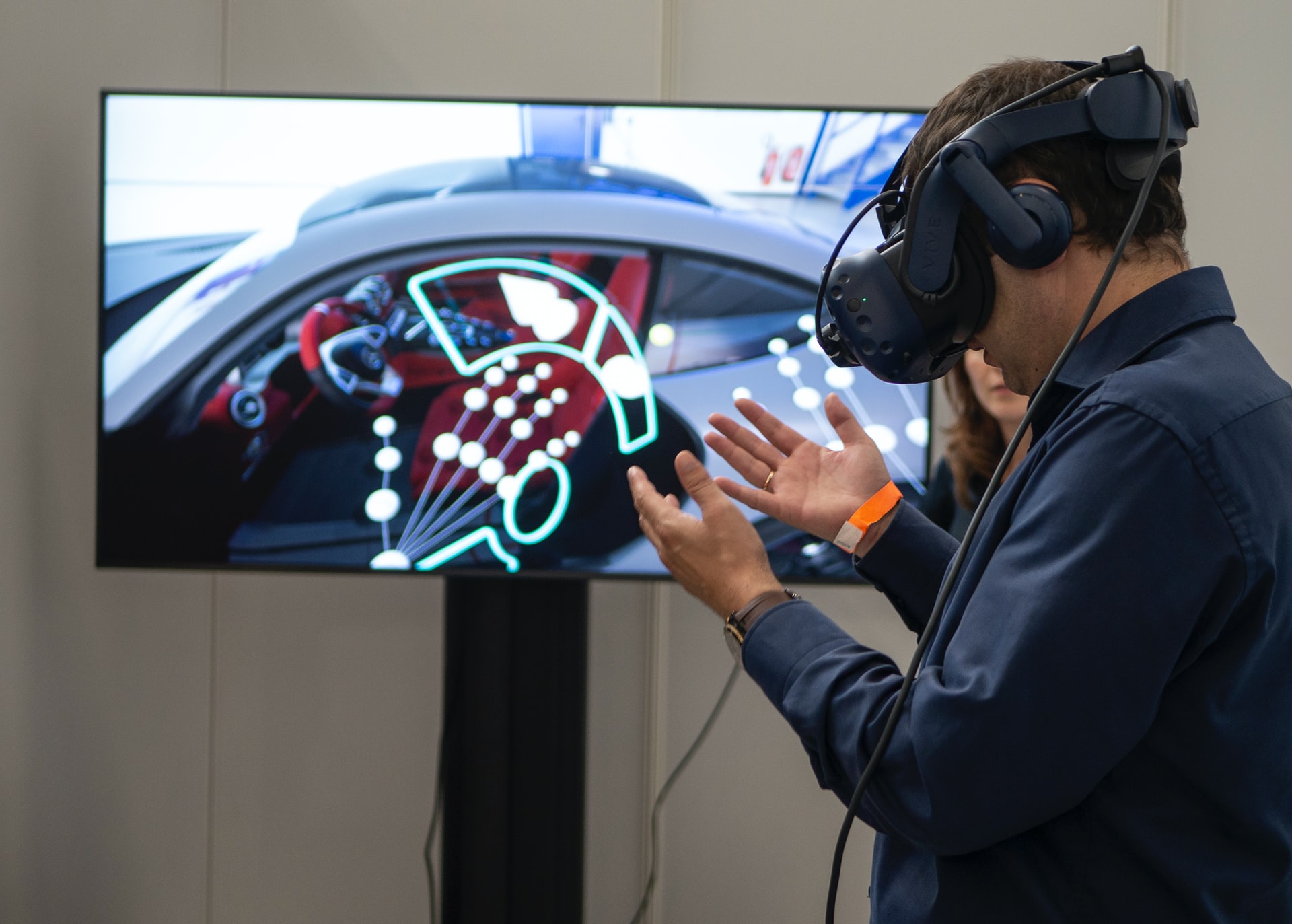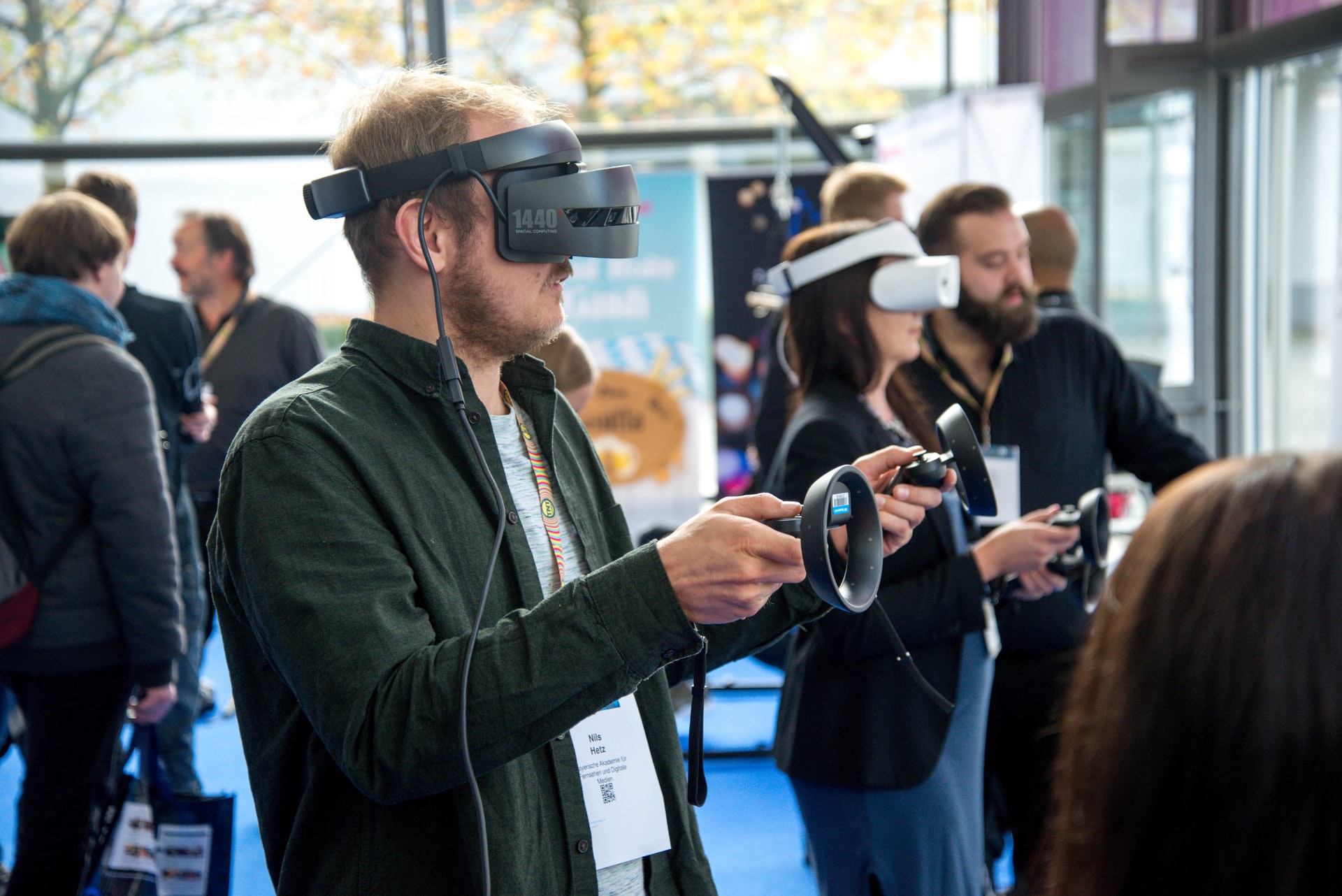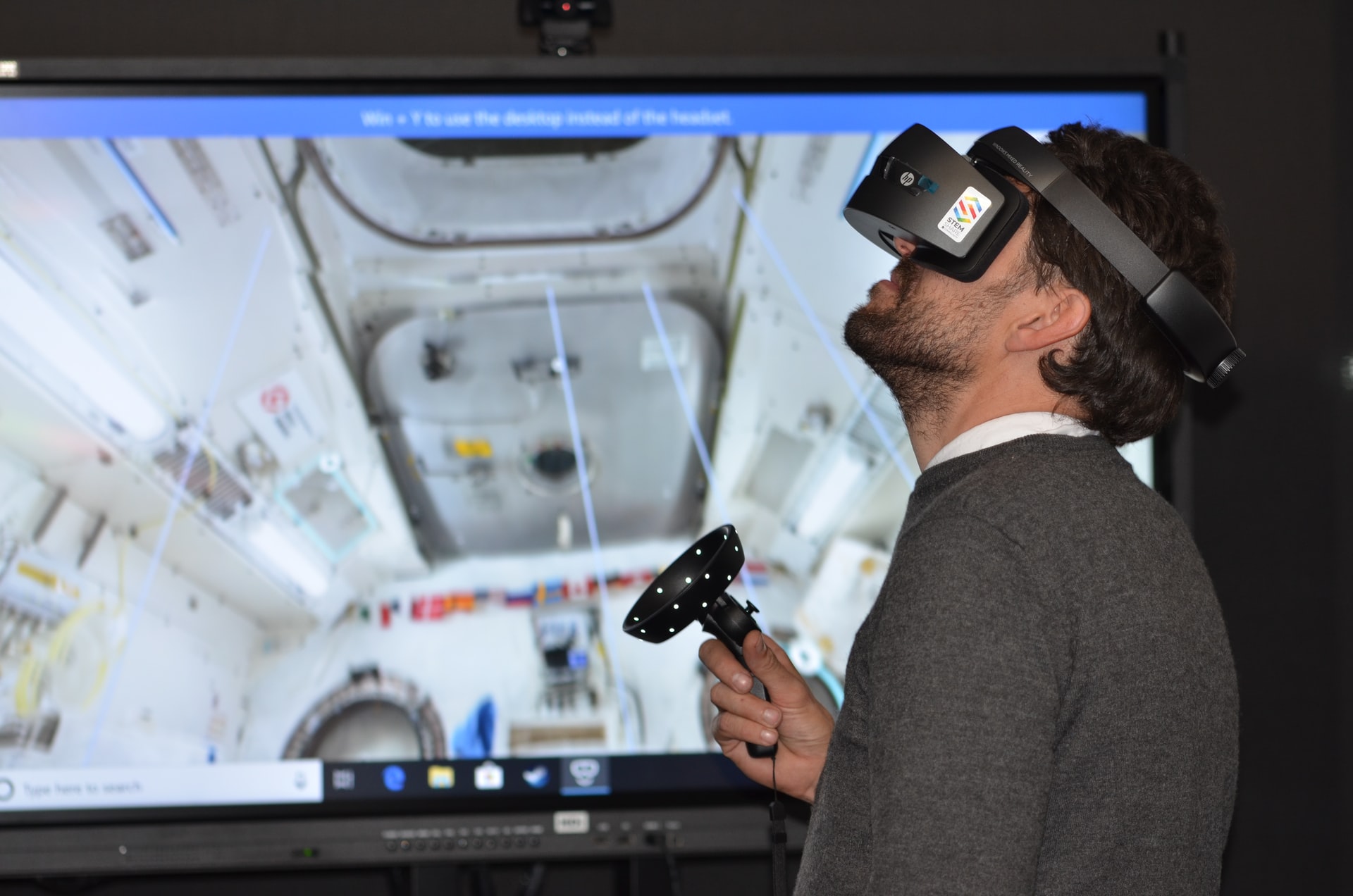- Walking Dead Saints and Sinners Best Weapons - July 31, 2023
- Pistol Whip Style Guide - June 8, 2023
- Bonelab Best Mods: Our Top 16 - February 15, 2023
Let’s face it, I think I speak for every fan when I say I’d have hoped virtual reality would be more mainstream by now. I thought Half-Life: Alyx was going to open the flood gates to a plethora of new and exciting AAA experiences — and who could’ve blamed me?
After all, that’s how things usually go when Valve put out a new Half-Life title: the first game set the precedence for interactive, environmental storytelling having a place within the stubbornly static realm of first-person shooters; Half-Life 2 showed the world how facial animations should be done as not to make your characters look like a third rate Wallace and Grommit knockoff (although no one seemed to take heed there); and Half-Life: Alyx — the first proper, fully-fledged AAA VR experience we’d ever really got the chance to play — should have set the bar for what the medium was capable of.
And it did. But no one, least of not Valve, seemed to follow suit. Here was the first all-singing-and-dancing, full locomotive, stunningly visualized VR game, and then…nothing.
Well, not nothing: there’s a huge wealth of indie games, of course, and I’m sure every VR fan will agree with me on how great it is to have such a passionate and creative army of indie devs continuing to push the platform forward — but if we want to see any significant technical advancements for VR in our lifetimes, it’ll take action from the big guns.
Considering the aforementioned dearth of big releases, and given that VR is still without mainstream attention because of it, people with interest are understandably cautious about jumping in. These headsets can amount to the price of a new console (some even more) and that’s excluding the cost of the beastly PC you’d need to run it on. There are console options, of course — well, one: PlayStation VR was a welcome, somewhat wallet-friendly introduction to the concept. PSVR 2 will be coming soon, too, so we’ll have to see what that brings.
If there’s one thing you gathered from this rambling intro, it’s most likely that the state of VR is ambiguous. On one hand, things are moving forward, and on the other, it doesn’t feel like things have taken off at all.
In this article, I’ll be attempting to assess the state of VR as a platform. Are we on the cusp of something big? Or is the medium still in its infancy after all these years?
Bottom Line Up Front
This article provides a deep dive into the current state of virtual reality technology, but if you just want the cliff notes, I’ve got you covered.
Deducing whether or not VR is still in its infancy or not is a complicated endeavor, but the reality is this: due to the nature of the platform, there’s a very high bar set for it to be considered a matured medium (at least in the same sense flat-screen gaming is considered).
It’s not in its technological infancy, even though it might seem that way; we’ve come a long way since disasters like the Virtual Boy, with VR HMDs now offering truly immersive, wonderfully realistic gaming experiences (Half-Life: Alyx being the ultimate showcase in that regard).
VR does, however, still have a long way to go so far as widespread adoption, and it’s here where the platform could reasonably be argued as being in its infancy. We need more people to try out VR for themselves, because, of course, seeing is believing. We also need more AAA gaming experiences to make enable the medium to stand out from flat-screen gaming. The technology will continue to improve, and so with time, we’re certain to see the sorts of AAA experiences we’ve been waiting for over the next few years — and with those experiences, a growing player base.
The Perpetual Baby of Interactive Entertainment

I suppose that subheading disintegrates any semblance of tension I built above in the intro, but alas, VR seems no closer to Ready Player One than it was last year or the year before that — but it’s not quite as simple as you might think.
It’s not just about linear, technological progression. HMDs (head-mounted devices) are continually getting better: inside-out tracking and higher resolution screens are two of the most significant advancements, and just considering these two factors alone, we’ve clearly come a long way in the last five years. But, as with any gaming platform, a paucity of big games presents a critical problem no matter how futuristic the hardware is.
Then there’s how the corporate shenanigans of the creepingly dystopian world we live in have seeped in. Facebook’s grip on Oculus has been an increasingly big deal for many, with the company requiring a Facebook account for you to even use our headset now (and that’s to speak nothing of the implications of the Metaverse). Oculus is also pushing for non-tethered devices — a technological achievement in one way, but also a rejection of the pursuit of raw power in another.
So yes, VR is still in its infancy in one sense, but for this sort of technology, that period is bound to last a long time, and it really depends on your perspective as to whether this influences your choice to adopt the hardware.
VR is the ultimate gaming experience people have been dreaming about for decades, and we’re so far off from actually simulating our every sense that the experience is going to feel quaint for a long time — no matter how quickly things move.
Flat-screen gamers have the privilege of being able to frame their expectations within the literal boundary of a monitor or a TV screen — the player knows the limitations of that space going in, and so with the ceiling set, we’ll always be impressed at ever-improving graphics or immersive open worlds.
The bar for being impressed is set decidedly higher for VR as there’s so much more to consider. Where you might be able to envisage flat-screen gaming becoming indistinguishable from reality within your own lifetime, the idea of plugging yourself into a headset and having it feel like you’re in The Matrix is potentially impossible.
The boundaries are both unknown and endless. As such, where do we draw the line that denotes VR as being a matured medium? Because it’s going to feel underwhelming, if compared to our experiences in the living world, for ages.
Let’s try and work out where we’re heading by taking a look back at how we got to where we are now.
A Brief History

I wasn’t kicking about in the 70s to know for sure, but I’d wager that since the inception of Pong or Asteroids — where the simulated tennis player was reduced to a white rectangle and the thrill of galactic warfare to a piddling isosceles triangle — the average consumer will have pondered about what it would be like relinquish reality for that of a virtual world.
But the world’s greatest engineers and story writers had been conjuring up these ideas since before the dawn of video games. Since the proliferation of science-fiction concepts during the same era, texts such as Laurence Manning’s seminal work of short stories “The Man who awoke”. The book was one of the first to explore the idea of a human being suspended in a virtual world.
The very first time VR was conceptualized was in 1962 with Morton Heilig’s Sensorama. The Sensorama presented as a large, arcade cabinet-style machine that the user enclosed their head in. It featured multiple films that aimed to simulate a virtual world through the use of an advanced stereoscopic display, and it utilized fans, odor, 3D sound, and a motional chair to augment the experience further.
The first HMD would come a little later in 1968. It was named ‘The Sword of Damocles’: an invention of pioneering computer scientist Ivan Sutherland. It had the ability to display shapes in front of the user as they observed the real-world room they stood in. As such, it functioned much closer to what we know today as augmented reality.
However, as is often the case with new technological innovations, the first rudimentary versions of the concept came out of governmental and military programs — such as NASA’s ambitious VIEW system (Virtual Interface Environment Workstation) from 1990: it enabled the exploration of basic virtual environments and utilized fiber optic gloves for further immersion.
When the 90s hit, it wouldn’t be long before the games industry took its first tentative steps into exploring the idea. Most have heard of 1995’s ‘Virtual Boy‘— Nintendo’s bold but fruitless attempt at bringing the company’s classic characters alive in a special way. SEGA also joined attempted to join the fray in the 90s with their ‘SEGA VR’, but the project was ultimately never released.
That was probably a good thing; if we’re discussing VR in regard to technological infancy, the ‘90s certainly represented VR at its worst. There was an array of similarly crude, equally unsuccessful attempts throughout the decade.
Of course, it was the year 1999 when the concepts of simulated reality became ubiquitous in the zeitgeist of the modern world, as that year brought the world The Wachowski sister’s magnum opus: The Matrix.
The Matrix boiled down complicated concepts into an unrelenting force of coolness. For the first time ever, it wasn’t just science fiction fans or the philosophical assertions of Nick Bostrom that were deeply questioning the potential of simulated reality — it was everyone.
But people wouldn’t get their true taste for VR until the Oculus Rift — the first modern HMD. The headset was conceptualized by American entrepreneur and VR enthusiast Palmer Luckey, and, through conversations with DOOM programmer John Carmack, a development kit was successfully funded on kickstarted.
The headset featured duel-lens LCDs that projected stereoscopic 3D, and it was a huge step up from anything we’d seen before. A better, consumer model was officially released in 2016 under a partnership with Facebook.
The Rift set the precedence for all future VR advancements. It wasn’t long before the HTC Vive was released, and Microsoft also announced their ‘Mixed Reality platform: an ecosystem that allowed the proliferation of a number of new HMDs from companies such as HP, Dell, Samsung, and more.
The Reality of Virtual Reality

So, considering the overview above, it would be reasonable to assume VR is on track for major advancements in the near future. While it’s a correct assumption, it’s also a little more complex than that.
Valve set the precedent for the peak of hardware advancements in 2019 with the Index, and leaks confirmed the existence of the Valve Index 2 — what will be another large tech leap forward that will likely be coming next year.
But Valve exemplifies the very problem; they and others will indeed continue to push the medium to new heights with new hardware (and hopefully, new software), but it isn’t just about that. VR as a concept is well past any denotation of technological infancy, but what is unquestionably and everlastingly juvenile is its success so far as consumer adoption.
Other than a few adverts for Oculus quest I caught circulating on YouTube and TV last year, most people still haven’t been shown what VR is. Sure, most people can conjure a basic idea of what it might be (most likely a rough approximation in between the worlds of Lawnmower Man and The Matrix) but you really have to have tried it to understand it; even with John Carmack’s brilliantly succinct descriptions, you’re never going to fully understand what it’s like to be transported to a virtual world in this way until you see it with your own eyes.
As such, it’s understandable to not be bothered by something if you’re unable to fully conceptualize how it works. My first go on a VR headset was with PSVR when Sony’s PlayStation team was sending reps down to local game stores to get people to give it a go.
I had a rough idea in my head of what it was going to be like, but the sense of space, the uncanny fuzziness it caused in my brain — non of that stuff I could’ve imagined. The biggest players in VR are so far removed from any public display like this outside of conferences like E3, and it’s a problem. It’s very difficult to sell someone an expensive pair of goggles on an idea.
Even after I’d fully convinced myself I was buying one, I winced as I handed over the cash. “Am I really spending £500 on a new technology with only a handful of games?”, I thought. It felt like I was taking a huge chance, and in many ways, I was.
Perhaps that’s one denotation of infancy: if you’re worried about buying something — about its future, its longevity — it’s surely somewhat infantile on the basis of the fact that it hasn’t proved itself yet. Because of this and the numerous other reasons we’ve discussed thus far, VR as a platform has been relegated to the enthusiast’s camp — in the eyes of most, an expensive toy for rich nerds to live out some weird fantasy. The Oculus Quest, as well as its subsequent iteration, went a fair way in bringing people into the fold, of course. In relinquishing the requirement for a dedicated PC, these untethered devices made the platform a lot more accessible — but it still isn’t enough.
And so, VR is in a pretty weird place. It’s half catering to PC enthusiasts with money burn (or those who saved their pennies for two years like me), half to the average consumer with untethered devices — devices that are admittedly more appealing, but that most people have no true grasp on how they function or how they play games on them: sold as a stand-alone ‘game console’ but also in no way, shape, or form the same thing as buying an Xbox, PlayStation, or Switch.
Speaking of the consoles, that’s another reason for the lack of adoption. PlayStation has been the only brand out of the three major players to enter the fray. Xbox flat out stated that VR wasn’t coming, and while Nintendo did attempt a rudimentary VR device with its LABO cardboard games, that’s hardly made a sizeable enough dint in the market. Had all three console manufacturers been pumping money into the platform, we’d undoubtedly be in a much different place today.
Half-Life: Alyx

Half-Life: Alyx was a dream come true for me, and it makes for an important part of this puzzle. Barely any time after I’d bought my Oculus Rift S, Valve announces a prequel to one of my favorite series of all time — a proper AAA VR experience for the next generation.
I was thrilled at the announcement and astounded after I saw the credits roll after my 15-hour playthrough. It was one of the best games ever made and not only that, it was a proof of concept for a true, next-generation VR experience.
But then, Valve did what Valve does best — they moved on to something else. Where many foresaw the return of Half-Life, the company went silent again; where we predicted the AAA flood gates to open, nothing on the scale of Alyx has been accomplished since: not by Valve or anyone else.
I’m sure Valve or another big dev will come out and surprise us again at some point (maybe Valve’s rumoured HLX project will prove to be something exciting for the VR space). VR tech is always moving forward, which is a big positive, and the platform is certainly not dead. It’s not in its infancy, either, and it isn’t really as easy as boxing it into a definite category like that.
Things will move forward, and eventually, we’ll very likely see another period of exponential advancement in software and hardware. When, is the question, and right now, that’s anyone’s guess!
Q&A
Hopefully, this article has at least piqued your interest in VR, but you won’t be remiss for being a little confused. Here are some frequently asked questions.
Question: Do I go With Tethered or Untethered HMD’s?
Answer: Tethered devices offer the ability to utilize the full power of a powerful gaming PC, which means better graphics. Untethered devices allow for ultimate portability, which can offer its own, unique type of immersion. The main point of consideration is that you’ll be limited to your headset’s proprietary platform for purchasing games if you have an untethered device. This means you’ll be missing out on Steam VR, which offers the largest variety of titles. You do, however, have the option to use the Link Cable if you go for the Quest 2: this will allow you to hook your portable device up to PC and utilize Steam. It won’t offer quite as good picture quality as a fully tethered device due to the compression, but in all honesty, it’s a fairly negligible difference.
Question: I’ve Heard a lot of Controversy Over Oculus Devices Due to the Fact they’re Owned by Facebook. What is this About?
Answer: It’s true that many have been put off the idea of buying an Oculus branded headset due to Facebook’s (now Meta) acquisition of the company. To use an Oculus device, you’ll need a Facebook account — something those wanting to boycott Meta and their business practices would obviously want to avoid. Here’s a great article to get you up to speed on why people are avoiding using Facebook services.
Question: I’ve Heard VR can Make you Sick/Give you Brain Damage/Harm your Eyes. Is this True?
Answer: There’s no scientific evidence to support any of those claims. While it’s true that beginners to VR often get some temporary nausea, and also that too much digital screen exposure can give you headaches and eye strain, there’s nothing specific about VR, beyond it being a digital, blue light-emitting device, that is suggestive of it being damaging to the body.
Conclusion: is VR Worth it in 2022?
The reality is that irrespective of the complexity involved in assessing the state of the platform, VR gaming is some of the best fun I’ve ever had. My admittedly small library of clever indie titles and the odd outstanding AAA piece has sustained my passionate devotion to this brilliant sector of gaming, and to decide whether it might do the same for you, you’ll need to investigate the games on offer.
It isn’t for everyone, but at the same time, there’s nothing else out there like it. It’s hard to see how you’d regret jumping into VR gaming, but taking the plunge is, understandably, no easy decision.
We’ve considered many different denotations of ‘infancy’ in this write-up, but perhaps the most important one of all also has the most positive attribution. New technologies always have an anxious element to them — will they take off or won’t they? But, in my opinion, that’s also part of the fun.
Even if you’re not ready to take the plunge, do yourself a favor and at least have a go on a friend’s. After all, the more people that experience the wonder of VR, the faster we’ll see it reach the level of realism we’ve dreamed of.
Continue reading:

